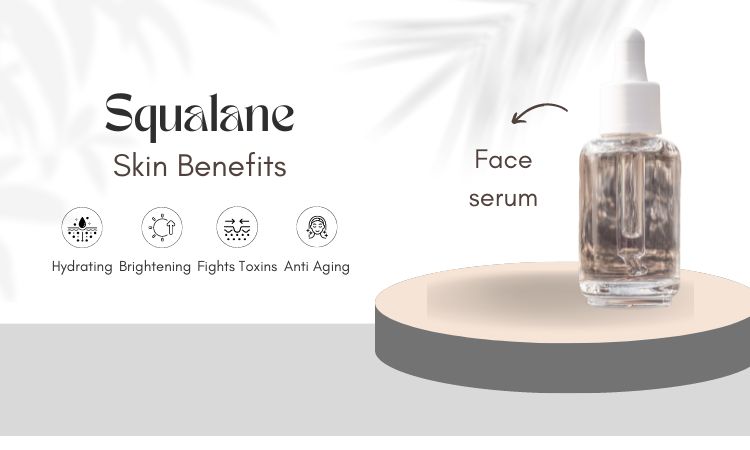Squalane
Squalane was introduced for cosmetic use in the 1950s. The unsaturated form of squalene is produced in human sebum and the livers of sharks. Squalane has low toxicity and is not a significant human skin irritant or sensitizer. However, due to environmental concerns, other sources such as olive oil, rice, and sugar cane have been commercialized and, since 2014, have been supplying about 40% of the industry total. In manufacturing, Farnesene is produced from the fermentation of sugarcane sugars using genetically modified yeast strains. Farnesene is dimerized to isosqualene and then hydrogenated to squalane.
Squalane skin benefits:
Hydrated skin is healthy, so squalane has tremendous benefits when applied topically. Boosting hydration can help your skin appear bright and healthy. The antioxidants in squalane products also fight skin damage and free radicals, which accelerate aging. In addition, since squalane is a detoxifier, regular use can boost collagen production, resulting in firmer skin. Finally, squalane is a derivative of squalene but much lighter making it a better option for acne-prone skin.

Squalane vs. Squalene
The body naturally produces squalene, specifically through our skin's sebaceous glands. The sebum that our sebaceous glands produce is made up of triglycerides, wax esters, and squalene. So, as annoying as oil can be, all its components, squalene included, help keep the skin moisturized. Squalene is a lipid, or fat, made naturally by our oil glands to hydrate and maintain our skin's barrier. The beneficial properties of squalene don't end there; it has also been found to fight free-radical damage in our skin as an antioxidant. Unfortunately for all of us, though, our natural production of squalene slows significantly after the age of 30, which is why it makes sense that we'd all want to bottle it up and slather it on our skin. However, squalene in its natural state isn't very stable, which is why, for skin-care purposes, it goes through a saturation process to become squalane. The e turns into an a when squalene is converted into squalane through hydrogenation. If squalene were not hydrogenated, it would oxidize when exposed to air and no longer have its benefits. In other words, squalane is a more shelf-stable and effective version of squalene, which is why the former is the version that makes it into our skin-care creams, face serums, and oils.
Who should not use squalane?
Anyone 20 years old and under does not need squalene, as their hormones are making sure they have plenty of it already. Very oily skin types also need not apply, as their goal is to normalize the sebaceous output from their pores and teach their skin to produce less oil.
Can you use squalane and vitamin C together?
Yes, it is an excellent combination because vitamin C is a potent antioxidant, and squalane is a soothing moisturizer. It is best to layer them onto the skin from the lightest weight product to the heaviest if you use squalane oil and a vitamin C serum together.
Squalane vs. hyalauronic acid
They are naturally occurring and present in the human body, but they do slightly different jobs. While Hyaluronic Acid increases skin's water content, squalane acts as a barrier, keeping moisture locked in and hydrating at a cellular level.
Have We Missed Anything?
- We Would Like To Hear From You!
- Which Advice Did You Find Valuable Today?
- Let us Know Down Below in the Comment, Review Section!
- Visit Skin-Beauty.com for more blogs, and beauty products!
Recent Posts
-
Discover the Perfect Glasses & Styles to Enhance Your Rectangle Face Shape!
Your face shape plays a significant role in determining the most flattering hairstyles and makeup te …Apr 17th 2024 -
Moroccanoil Treatment for Hair: The Ultimate Guide
Moroccanoil Treatment for Hair: The Ultimate Guide In the world of hair care, few products have …Apr 1st 2024 -
You deserve to shine bright like a diamond! Unveil the ideal beauty trends for a diamond face shape
Discover the Perfect Hairstyles and Makeup for a Diamond Face Shape Your face shape plays a …Mar 29th 2024




